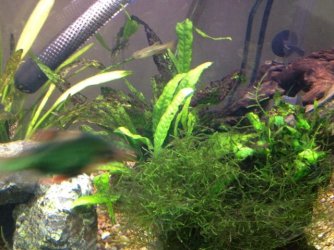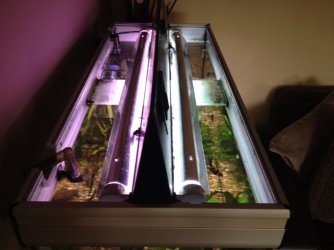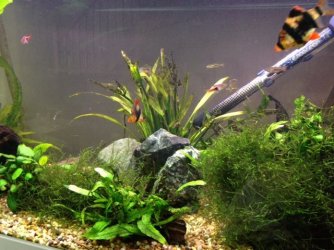Hi,
I really struggle to keep any sort of plants looking nice in my tank and i'm looking for advise on how to improve this. I am unsure if using my current set up I can go to a fully planted tank, or if I would need to keep similar to how it is.
the tank is a 180 litre one, and currently has a tetratec ex700 filter but soon to have the Eheim 2078 fitted.
I have attached some photos of the current set up, you will see my leaves turn black, and my plants just don't grow. I have tried many sorts of plants, but I end up usually removing and binning them after 4 weeks or so when they tend to just die. I do add some plant nutrients (seachem flourish I think?)
For lighting I have 2 different tubes. One tropical colour and one daylight, both 36w with diffusers to direct the light.
I have absolutely no experience with plants, knowing if my lighting is ok or anything so any info would be a great help!
thanks
sorry I cant add any more photos
I have worked it out
.
.
.
.
I really struggle to keep any sort of plants looking nice in my tank and i'm looking for advise on how to improve this. I am unsure if using my current set up I can go to a fully planted tank, or if I would need to keep similar to how it is.
the tank is a 180 litre one, and currently has a tetratec ex700 filter but soon to have the Eheim 2078 fitted.
I have attached some photos of the current set up, you will see my leaves turn black, and my plants just don't grow. I have tried many sorts of plants, but I end up usually removing and binning them after 4 weeks or so when they tend to just die. I do add some plant nutrients (seachem flourish I think?)
For lighting I have 2 different tubes. One tropical colour and one daylight, both 36w with diffusers to direct the light.
I have absolutely no experience with plants, knowing if my lighting is ok or anything so any info would be a great help!
thanks
sorry I cant add any more photos
I have worked it out
.
.
.
.









